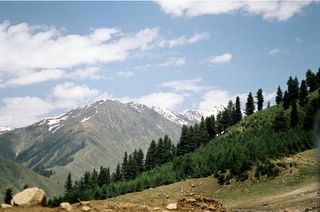About Digital Camera Memory Cards
Digital Photography BONUS Secretby David Peterson
Another accessory you should purchase is a spare memory card. Most cameras are sold with a 'starter' memory card that is usually a low capacity card that's enough to take a few sample photos on, but not enough for day-to-day use.
What is a memory card?A memory card is the little removable piece of plastic that your camera uses to store your photos. Memory cards come in different sizes and names such as Compact Flash (CF), Secure Digital (SD), Memory Stick (MS), Smart Media (SM) and xD.
Running out of memory on your card is a little like running out of film in a traditional camera. Rather than purchasing a new film to take more shots though, you move your images to your computer or a CD and re-use the same memory card.
Purchasing extra memory cards is a good idea is you're on a vacation and want to ensure you can store all your photos. Fortunately, prices of memory cards have come down dramatically in recent times.
Purchasing - what do I need to know?There are two pieces of information you need to know when purchasing a new memory card. What type of card your camera takes, and how large a memory card you wish to buy.
What memory card type does my camera use?
The simplest way to find out the type of memory card your camera uses, is to take your existing card out of the camera and look on it for one of the types listed above. If you're still not sure, take your existing card into the camera store and ask the staff for a new card with the same type as what you have.
The size of memory card you purchase will depend on your photography needs as well as your budget. Memory cards come in sizes between 16 Megabytes (and will fit between 4 and 32 images depending on your camera capabilities and image quality) and 4 Gigabytes (4,000 megabytes - store thousands of images on one of these cards).
My advice is to purchase the largest sized card you can afford. This will allow you to take as many pictures as possible before needing to transfer to a computer or CD. On my last holiday, I took along 1 Gigabyte of memory card storage allowing me to take about 500 images without needing to take my computer along with me to download the images to.
Memory Card SpeedAnother feature to keep in the back of your mind when purchasing a new memory card is the card's speed. The faster your memory card speed, the faster your camera can write it's image to the card, and the quicker you can take another photo. The actual speed will be the LOWEST of either your camera's fastest transfer speed (see your camera's manual) and the memory card's speed. If your camera can transfer at 40X speed, but your memory card can only handle 12X, 12X will be the actual transfer speed. Note that some cameras ignore the card's speed and write as fast as possible all the time.
How many memory cards do I need?I recommend you have at least two memory cards for your camera. The professionals usually carry 4-6 memory cards and when they run out of memory on one they swap to the next, but unless you're taking LOTS of photos, that's overkill. With two cards, you can normally work with one but you have a spare just in case you run out of the first, or you go on a long vacation and need to store more images than you normally would.
MicrodrivesA recent invention that's gaining a lot of popularity is the Microdrive. These are for the Type II Compact Flash cards, and instead of memory inside the card, there's a tiny hard drive. Their advantage is they can store an enormous amount of data (over 6 Gigabytes), but the problem is they are a little more expensive than a traditional memory card, and can take longer to save your image. They also aren't as shock resistant as standard cards.
Care of cardsMemory cards, although they seem to be small and flimsy, can be quite robust. I've dropped one of my cards in a glass of coke and it has survived - although I don't recommend you do this! It will also depend on the brand of card you purchase. More expensive cards tend to withstand more pounding. Most memory cards will withstand a small amount of misuse, but like any electronic components, take good care of them and they will serve you well.
Other Memory Card Secrets
If you transfer lots of images to your computer, purchase a card reader. These will allow you to transfer the images to your computer at a much faster rate than using your camera's connection.
Contrary to popular opinion, airport x-ray machines will not damage your camera's memory cards. If you're really worried, remove them from your bag and ask the screeners to inspect manually.
Turn off your camera when inserting or removing memory cards. Taking the memory card out while the camera is writing to the card could wreck both your card and camera.

